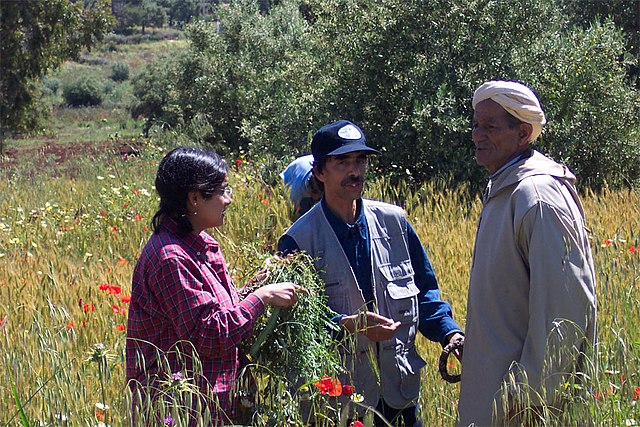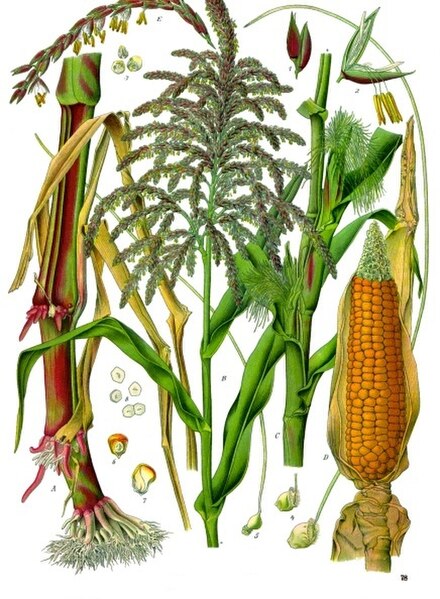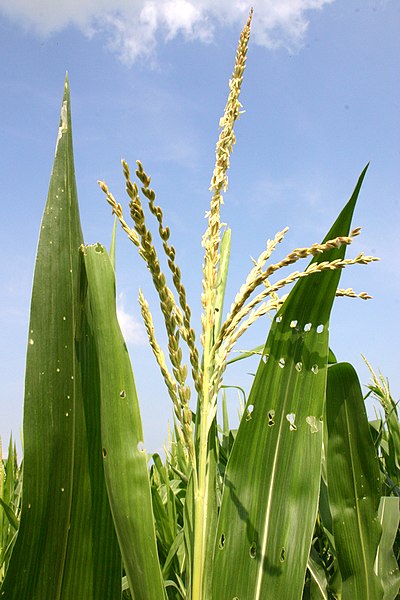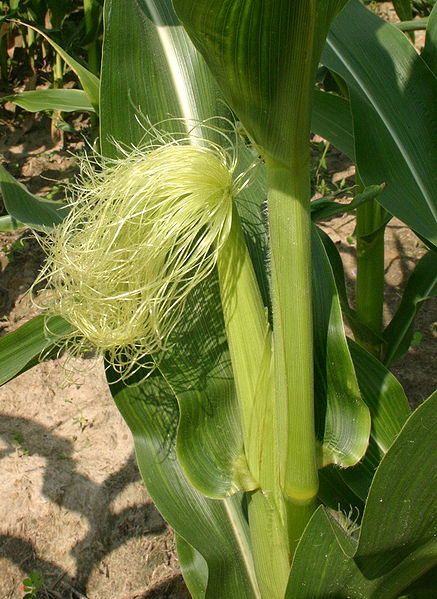A crop wild relative (CWR) is a wild plant closely related to a domesticated plant. It may be a wild ancestor of the domesticated (cultivated) plant or another closely related taxon.
Two conservationists collecting indigenous knowledge on cultural practices that favour CWR populations, from a farmer near Fes, Morocco.
Example of one of the first genetic reserves established to conserve CWRs near Kalakh al Hosn, Syria
Cajanus scarabaeoides is one of the closest wild relatives to the cultivated pigeonpea and has high drought tolerance and high protein content. Being screened at the campus of the International Crops Research Institute for the Semi-Arid Tropics in Patancheru, India.
Geographic hotspots of distributions of crop wild relatives not represented in genebanks
Maize, also known as corn in North American and Australian English, is a tall stout grass that produces cereal grain. It was domesticated by indigenous peoples in southern Mexico about 9,000 years ago from wild teosinte. Native Americans planted it alongside beans and squashes in the Three Sisters polyculture. The leafy stalk of the plant gives rise to male inflorescences or tassels which produce pollen, and female inflorescences called ears. The ears yield grain, known as kernels or seeds. In modern commercial varieties, these are usually yellow or white; other varieties can be of many colors.
Maize
Ancient Mesoamerican relief sculpture of maize, National Museum of Anthropology of Mexico
Many small male flowers make up the male inflorescence, called the tassel.
Female inflorescence, with young silk








